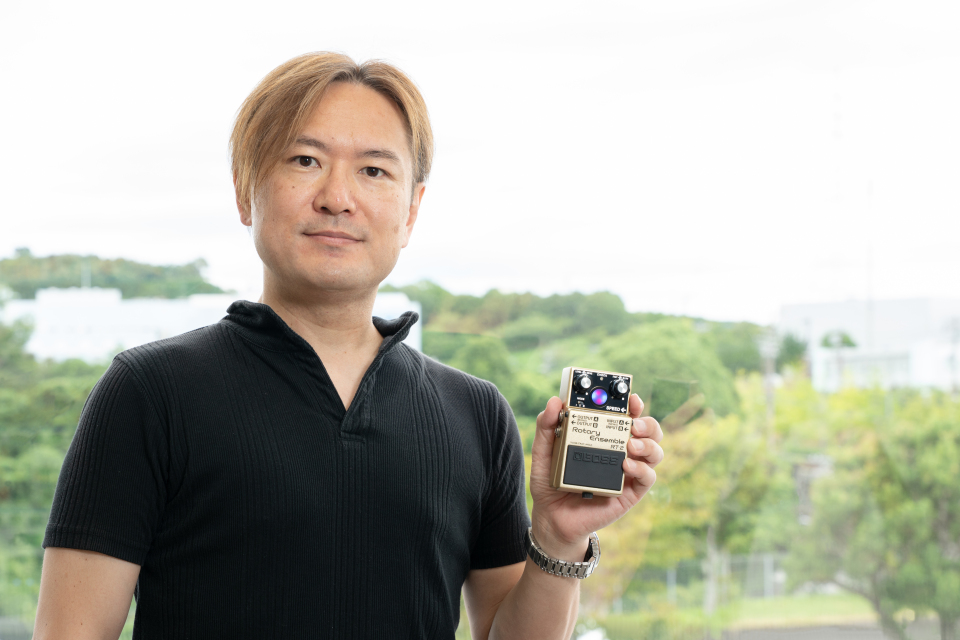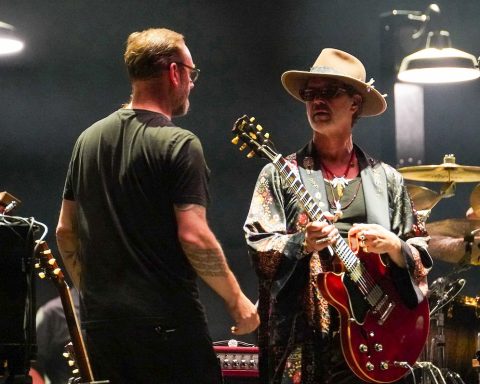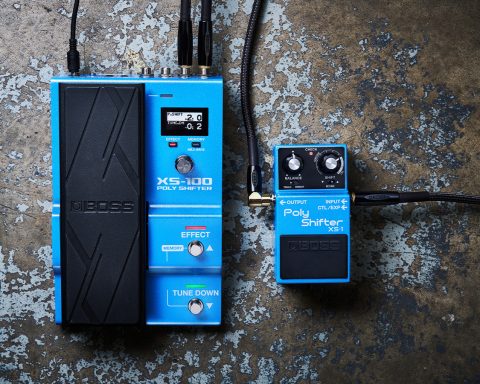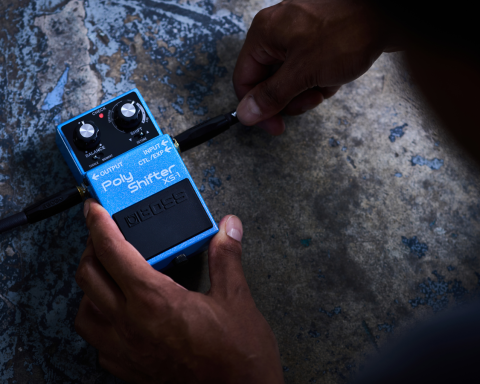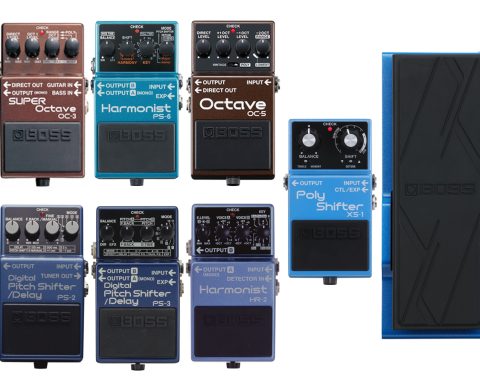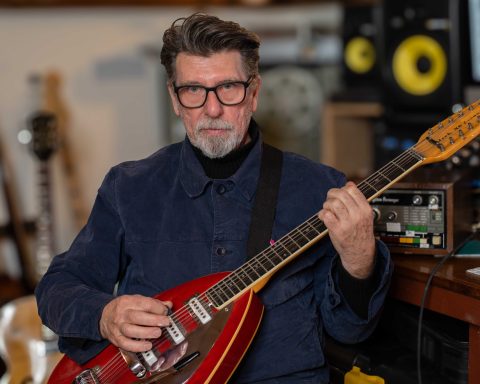BOSS has led the way in modulation effects since its inception. In fact, the very first BOSS pedal—the CE-1 Chorus Ensemble—was the world’s first chorus pedal, setting a new standard and giving rise to an entire category of stompboxes. While choruses, phasers, tremolos, flangers, and vibratos are well known, one type of modulation stands apart with its distinct character: rotary.
Spinning History
The rotary sound predates all electric guitar effects, originating in the 1930s with Donald Leslie’s invention of the Leslie speaker. Initially designed for organs, rotary speakers later gained popularity among guitarists, their expressive, swirling tone becoming a standout sound on hit records from the 1960s onward.
Released in 2005 as part of the acclaimed Twin Pedal series, the BOSS RT-20 Rotary Ensemble delivered authentic rotary effects using COSM (Composite Object Sound Modeling) technology. Though discontinued in 2019, its rich modulation tones remain highly sought after, making it a coveted find on the used market.
2025’s RT-2 Rotary Ensemble is the first BOSS compact pedal of its type. An apex of DSP modeling, the RT-2 faithfully captures the elusive character of a genuine Leslie 122 rotary speaker. With three versatile modes, comprehensive control options, and stereo I/O, it delivers the most immersive and expressive rotary sounds available.
In this exclusive interview, Takeshi Mitsuhashi, project lead for the RT-2, takes us behind the scenes. Here, he shares the story behind its creation and offers fascinating insights into this benchmark-setting rotary pedal.
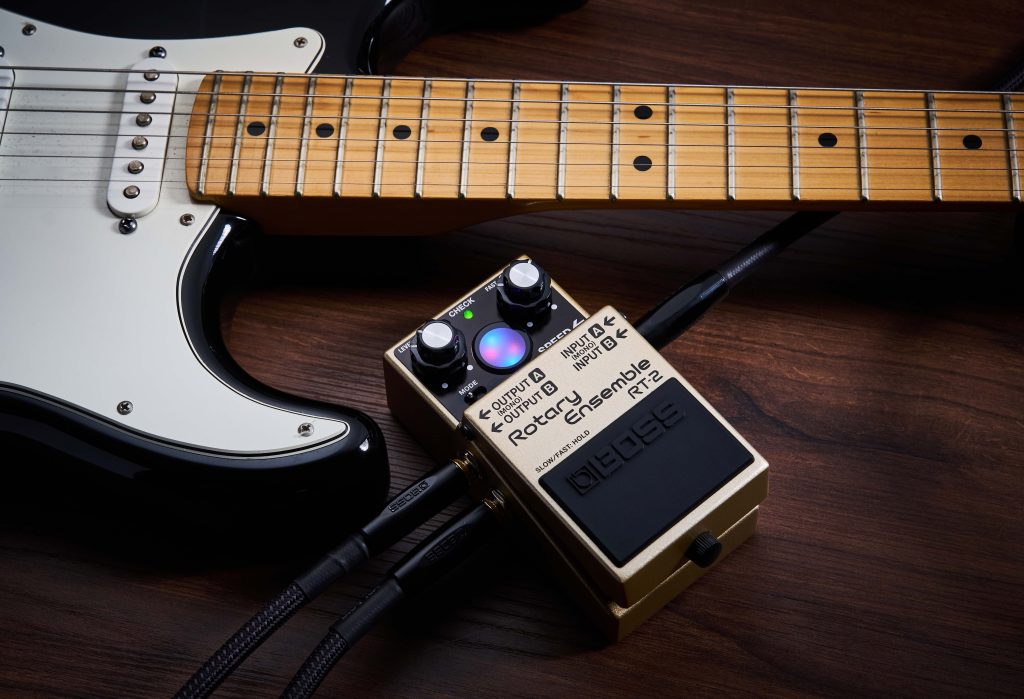
"Like real-world reverb, rotary cannot be accurately reproduced using just analog electronics; powerful DSP is required."
Realistic Representation
How would you describe the rotary modulation sound?
Many people are unfamiliar with the rotary phase modulation sound, which originates from the physical rotation of components in units like the Leslie 122 cabinet. The physical rotation of treble speaker horns and a bass speaker drum creates the Doppler effect, which affects pitch. But the rotary effect is not like a pitch shifter—instead, it creates smooth, subtle fluctuations. At the same time, there is a sense of spatial movement and amplitude variation.
Rotary modulation is not the same as a regular phaser, chorus, vibrato, or tremolo pedal. Comprising multiple factors, it’s a distinctive sound originating from the action of a mechanical device rather than an analog circuit. Like real-world reverb, it cannot be accurately reproduced using just analog electronics; powerful DSP is required for a realistic representation. We have achieved this with the RT-2.
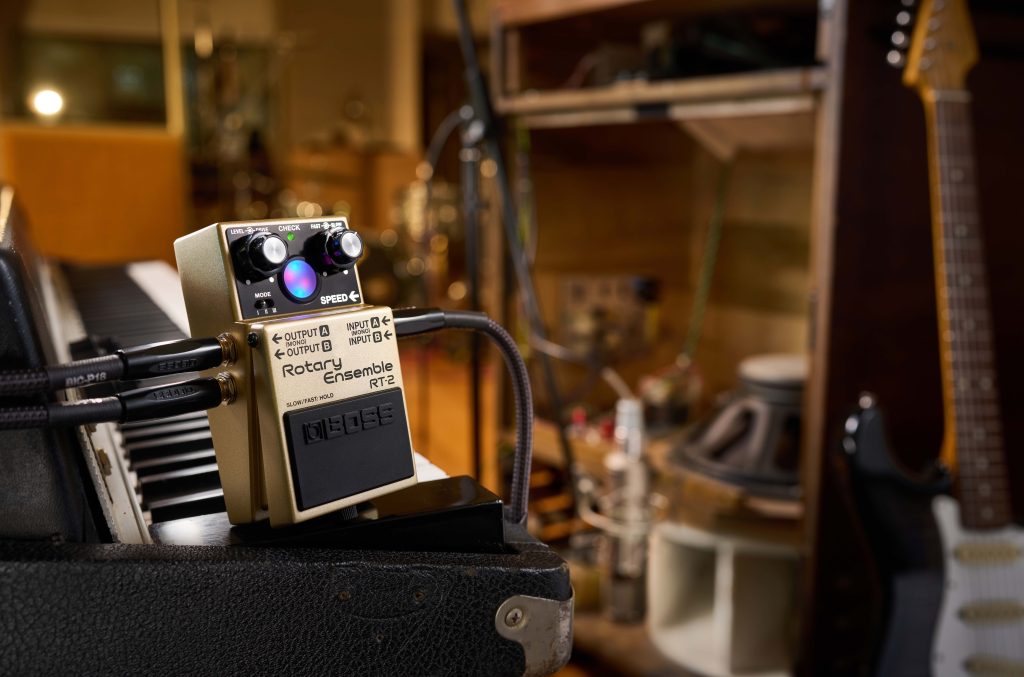
"The RT-2 can be used for many different styles of music, and you can even use it with different instruments apart from the guitar."
An Ageless Sound
What guitar-playing styles suit the RT-2 Rotary Ensemble?
Of course, rotary effects are well-known to blues-, classic-, and hard-rock players. But the RT-2 can be used for virtually any type of music. It’s a very comfortable sound that can be used in a more traditional way, but players can get creative and use it to make original tones.
Also, it isn’t narrowed down to a type of music, like how the BOSS Metal Zone or Heavy Metal pedal names suggest. It can be used for many different styles of music, and you can even use it with different instruments apart from the guitar. Keyboardists, especially, will be interested in the RT-2’s capabilities. We hope younger guitarists will discover the ageless rotary sound using the BOSS RT-2.
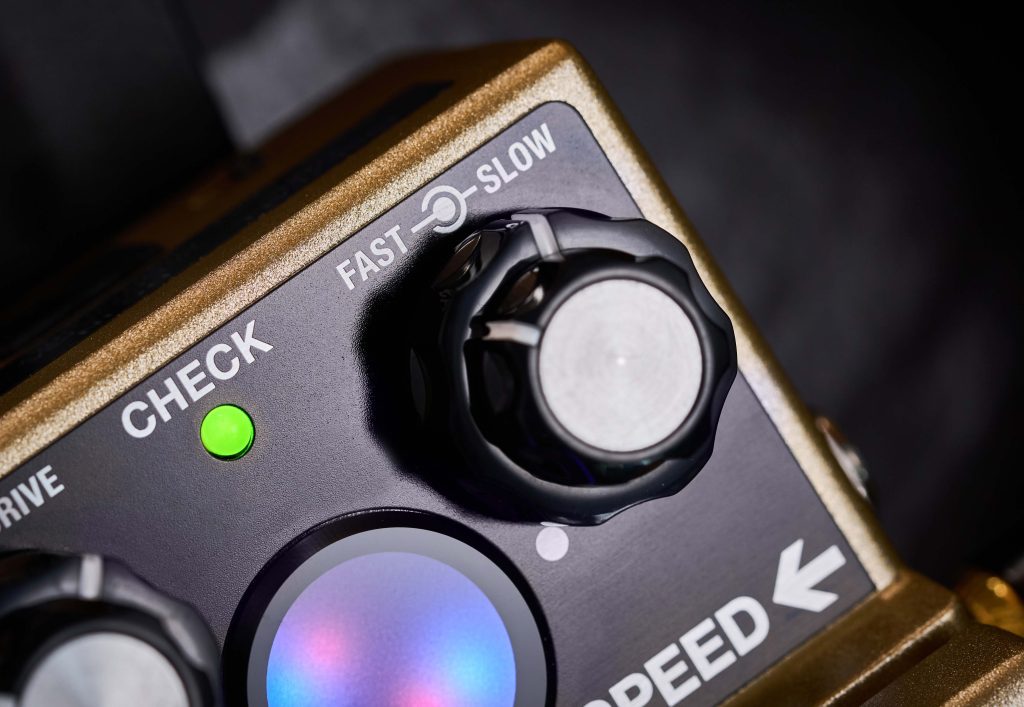
"Mode I is the purest, most essential rotary sound. It faithfully reproduces the Leslie 122 speaker sound."
Modes and Mods
What are the differences between Modes I, II, and III?
Mode I is the purest, most essential rotary sound. It faithfully reproduces the Leslie 122 speaker sound. Modes II and III are modified versions of this. Why did we include modded versions? The Leslie’s natural sonic characteristic is a bit narrow. The warm tone is great, but we wanted musicians to have more choice, particularly when combining it with other guitar effects. So, Modes II and III are designed for optimal performance when using the RT-2 with other pedals. It’s funny, but some players (including keyboardists) prefer the more extreme sound of older digital rotary effects.
Mode I faithfully reproduces the Leslie 122’s warm, natural sound. The frequency range is a little bit narrower than Modes II and III. It’s good for arpeggios, strummed chords, and atmospheric tones. Mode II has a wider frequency, and the rotation is very clear. Some players might prefer Mode II to Mode I. Which is best? There’s no correct answer. It is subjective.
Mode III gives more presence in a mix. It provides great clarity and articulation and has an extended drive range compared to Modes I and II. We simulated the Leslie 122 perfectly, but some musicians still like to use more drive, so we gave that higher-gain option.
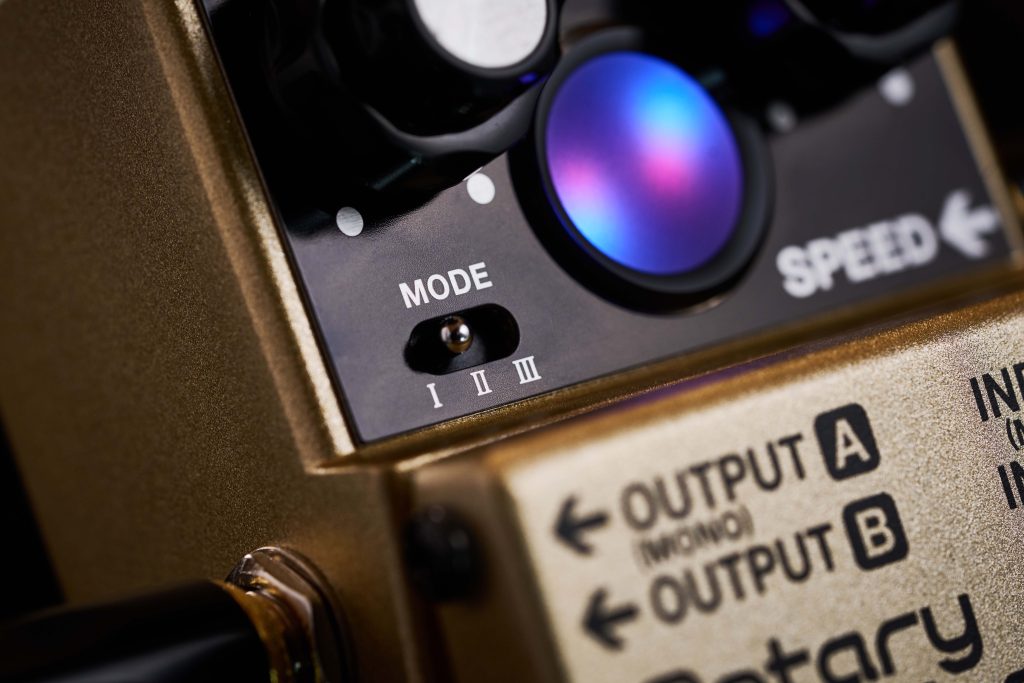
"The RT-2 and RT-20 have totally different algorithms. We have revamped the DSP engine, and the sound is much improved."
Partners and a Predecessor
Can you recommend some BOSS pedals that pair well with the RT-2 Rotary Ensemble?
It’s so interesting to experiment with different BOSS effectors, and the RT-2 Rotary Ensemble is the first compact pedal of its type. You can get so creative and have a lot of fun trying out different combinations. For example, try an organ sound from the SY-1 Synthesizer, and combine it with the RT-2 and SDE-3. You can make amazing organ-style sounds just using a regular guitar pickup.
2025’s RT-2 Rotary Ensemble supersedes 2005’s RT-20 Rotary Ensemble. What are their fundamental differences?
Fundamentally, the RT-2 and RT-20 have totally different algorithms. We have revamped the DSP engine, and the sound is much improved. The RT-20 was developed over 20 years ago, so DSP technology, CPU power, and modeling methods are now better. We can now reproduce detailed behaviors thoroughly without worrying about DSP resource.
The RT-2 is a compact pedal, and the RT-20 was part of the larger Twin Pedal series. Yet even with its compact format, the RT-2 has powerful controllability equivalent to that of the RT-20.
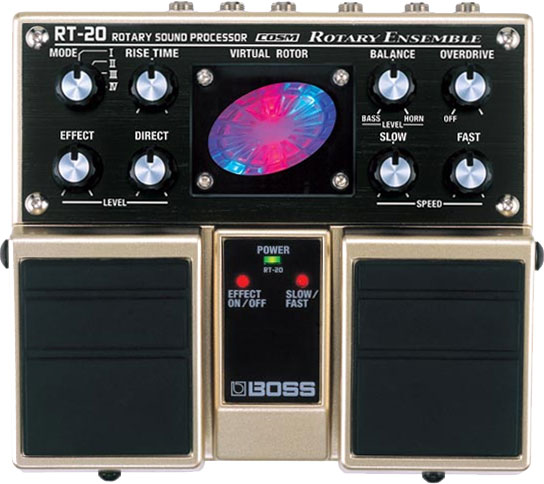
"The process was extremely complex, but in the end, we created the best rotary sounds."
Complex Process
What’s the story behind the RT-2 Rotary Ensemble’s R&D?
We began researching and developing a more three-dimensional rotary sound based on a real Leslie 122 speaker. An engineer created numerous DSP algorithms, but it was proving difficult to perfect the sound, and the DSP power required was massive.
For a while, it seemed nobody knew how to solve the issue. Gradually, engineers moved on to different projects, but I started looking at the algorithms and documentation again.
Ultimately, smaller DSP technology allowed us to revisit the rotary sound for this compact pedal. We made considerable efforts to create better algorithms without losing the essential elements of the original Rotary Ensemble pedal, the RT-20.
The process was extremely complex, but in the end, we created the best rotary sounds. The sound is so good, and players often tell us how much they love it. We had several road tests with professional musicians who love rotary effects, and they highly appreciated the sound.
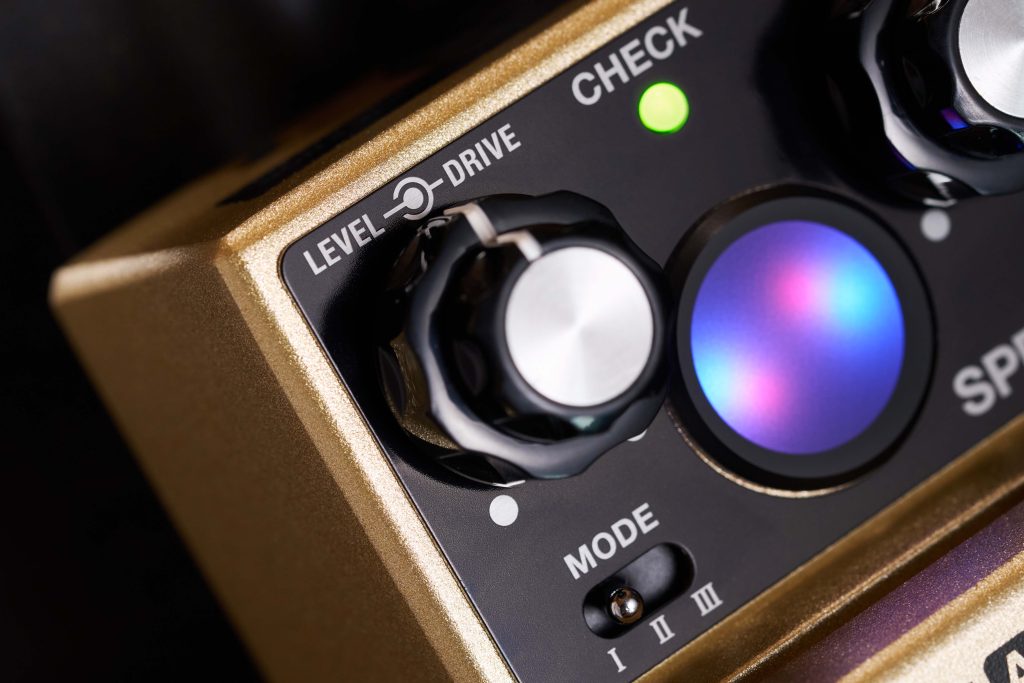
"Like the RT-20, the RT-2's Virtual Rotor display is a fantastic visual aid that moves with the rotary effect."
A Virtual Visual
Tell us about the Virtual Rotor display.
Like the RT-20, the RT-2’s Virtual Rotor display is a fantastic visual aid that moves with the rotary effect. The rotation of the red light indicates the status of the treble/horn speed, and the rotation of the blue light indicates the status of the bass/drum speed. People really like this feature. This display helps players visualize the rotary effect more easily.
How can the RT-2 Rotary Ensemble’s outputs be configured?
In addition to a regular stereo output, the RT-2 can be configured to wet and dry using Outputs A and B, respectively. This allows for greater flexibility when connecting other pedals. It also allows you to connect two amplifiers—one with a rotary effect (wet) and the other without (dry). The dry signal at Output B is also DSP, ensuring there are no phase issues with the wet signal at Output A. After testing, we found this to be the best option by far.
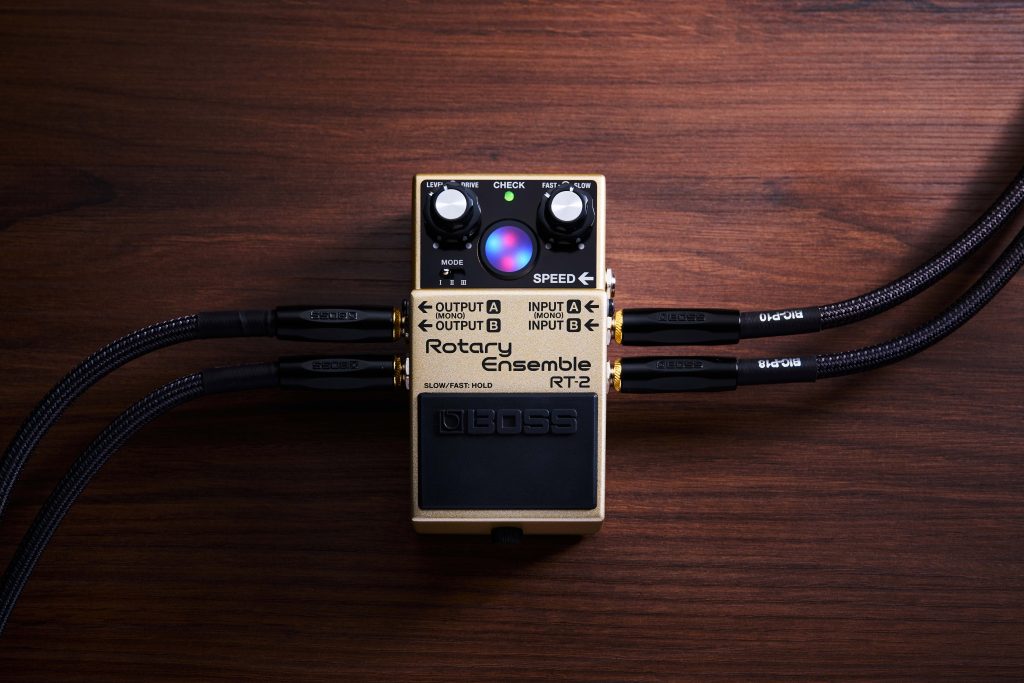
"We modeled a Leslie 122 in our anechoic chamber at the Roland headquarters."
Moving in Stereo
What are the benefits of using the RT-2 Rotary Ensemble in stereo?
Most guitarists use one amplifier in mono. However, using two amplifiers with the RT-2 in stereo gives a much more three-dimensional rotary sound. This option is also great for recording, where the stereo image can be clearer. Many players will enjoy using the RT-2’s stereo-in and stereo-out options, especially combined with other stereo effects like reverb and delay.
To enhance the RT-2’s three-dimensional stereo sound, we modeled a Leslie 122 in our anechoic chamber at the Roland headquarters using a pair of high-quality, flat-response microphones. We experimented with various angles and set them at the position that captured the best dynamics.
Company names and product names appearing in this article are registered trademarks or trademarks of their respective owners.

